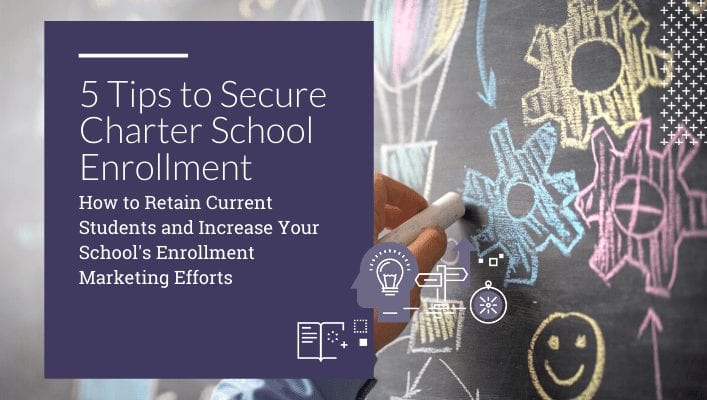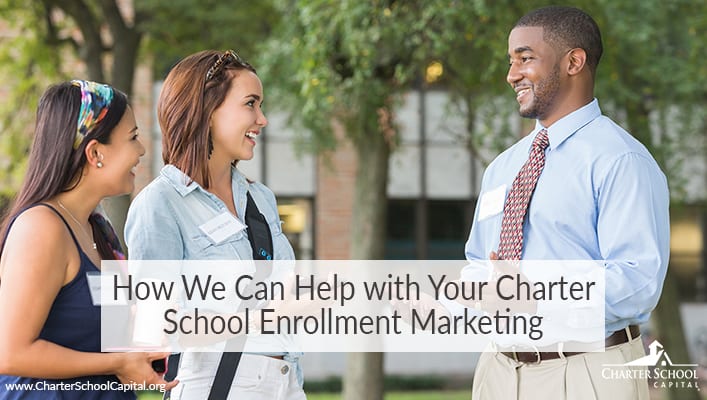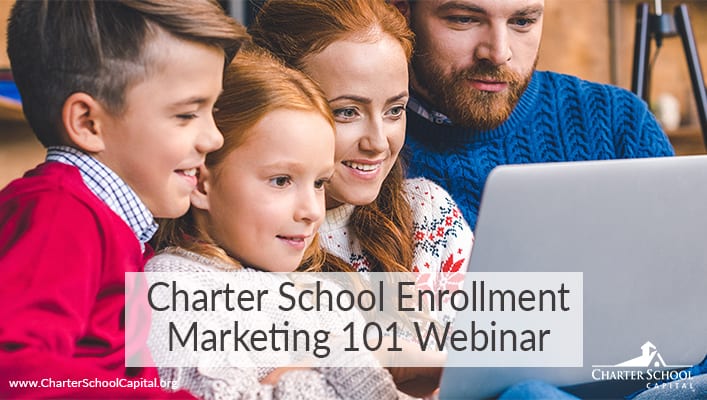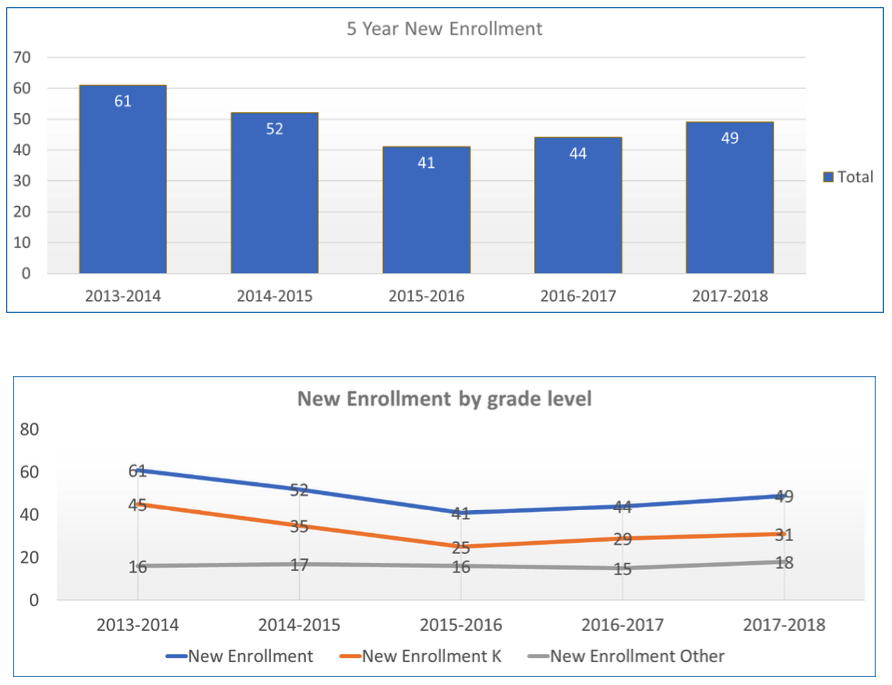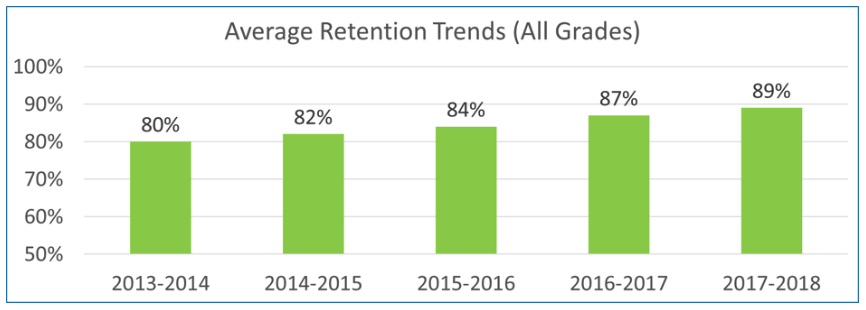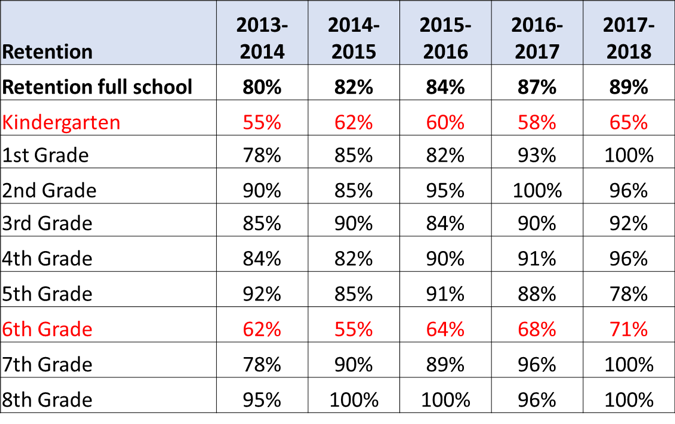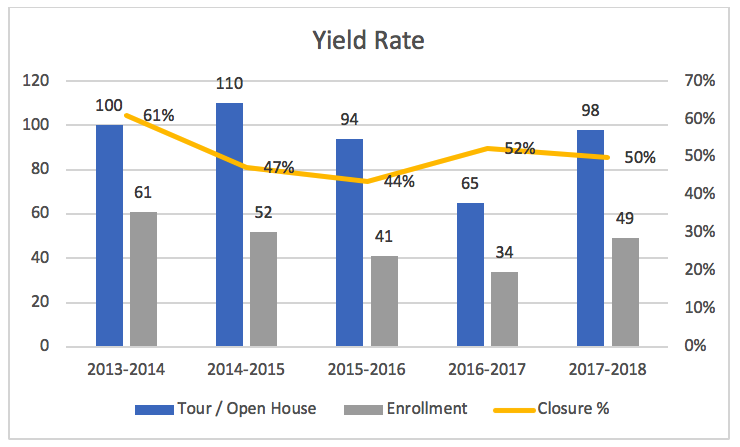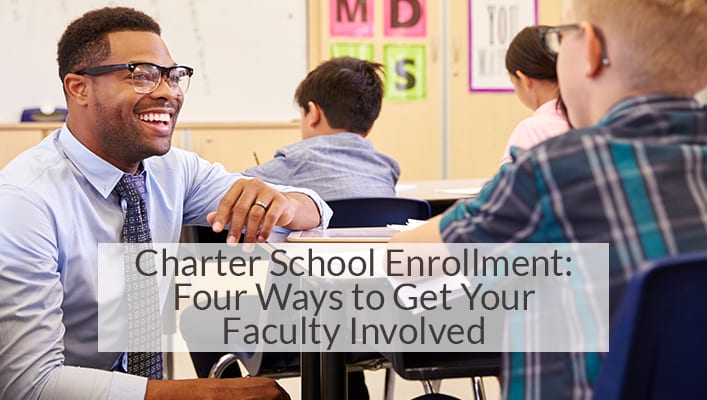Join the experts as they answer all your questions live on Thursdays on YouTube at 10am PT / 12pm CT / 1pm ET. Charter School Capital – YouTube
In this week’s session, Michael Barber and Ashely McQuarrie discussed social media, website best practices, and pay-per-click ads. You can watch the recording here, or read the transcript below.
Michael B. (00:18):
All right. Hi everyone. Welcome to our weekly Thursday series on all things enrollment marketing. I’m Michael Barber and I’m joined by my colleague Ashley MacQuarrie. Ashley, how are you?
Ashley M. (00:28):
Hey Michael. I’m good. Hi everybody.
Michael B. (00:31):
So good to have you on today. Hey, we do this every single week. For those of you that have been on this journey with us last few weeks, we’re here every Thursday for 10 minutes talking all things enrollment marketing. Want to let you all know that we’re taking a little break on the enrollment marketing topic next week. We will have Dr. Charlotte Polands here. She’s an expert on teacher retention, specifically teacher retention for black and brown school leaders. So we will have her here, answering all your questions related to a webinar we’re doing on Tuesday. If you need more information, just drop your question to the chat. We’ll make sure you’ve got that URL.
(01:06):
But we’re going to spend the next nine or so minutes back on our main topic of our weekly Thursday chats around all things enrollment marketing efforts. And Ashley, I know our team, your team did two webinars over the last two weeks. One for the Texas Charter Schools Association and another for the Illinois network of charter schools. I would love your perspective, what did you hear from school leaders? What questions are they asking you on these webinars?
Ashley M. (01:31):
Yeah, yeah. One of the questions I’ve been hearing is what social media accounts should charter schools be on? And that’s a really common question. I think especially when a social media channel like say TikTok starts gaining traction, is like, do I need to be doing that? And I think the answer, what I shared in the webinar this morning was it really just depends on your community. It’s always going to go back to where is your community and what do they want from you.
(02:00):
So it may be that you have families who are really active and engaged on Facebook. Maybe you have older parents or even grandparents who are really involved in their children’s education, their student’s education. And maybe they prefer to get their information from you on Facebook or maybe you’re actually speaking primarily to students themselves. And so they may very well be on Instagram. If you’re speaking to high school students, they may also be on TikTok. And so that could be something to begin testing the waters. I think what I shared is we’re here on YouTube. YouTube is the most popular social media account for kids and adults. So if you were going to pick a new platform to really start paying attention to, I would say schools can get a lot of value from posting video content on YouTube this year.
Michael B. (02:48):
I think it’s such a good point you make, I was actually, we had a little community meeting in my neighborhood yesterday and definitely some diverse voices at the table in terms of ages and backgrounds. And one of the things that was a common theme was that all of us, depending upon age or demographic or background, use different platforms to communicate. So when someone was like, “Oh, we should have a Facebook community group.”, there was someone sitting there that’s like, “I’m anti-Facebook I’ve not been there for a couple of years. I’m on Instagram.” To which I’m like, “That’s still Facebook.” You have to be the marketer in the room that’s like, “That’s still Facebook.”
(03:25):
But I think it’s such a good point from an enrollment perspective to understand, hey, depending upon who is helping your kid make a decision on school, they could be in different places. And as school leaders, we’ve got to figure out like, okay, if we’re trying to attract the student audience, we’re probably going to be in a different place than if we’re trying to attract a parent and/ or a grandparent audience. And so it’s nice to hear that that’s reflected also from an enrollment perspective. And we got to give a quick shout out to Bruce in the background here. Your pup just made a little appearance, such a cutie pie that cannot go acknowledged. We are a dog company for sure. And so just give a little shout out to Bruce.
Ashley M. (04:09):
[inaudible 00:04:10].
Michael B. (04:10):
Yeah, okay. Let’s get back to questions. I know there was another one that came up related to search marketing efforts and would love you to hear what that perspective and question was during these conversations.
Ashley M. (04:22):
Yeah, we’d been talking about really the value of SEO as well as the value of some paid search efforts like pay per click, Google campaigns. And the question, and we get this question a lot with all sorts of things from websites to social, is do I really need to hire a vendor to do these things for me? Can I do SEO and PPC on my own? And the answer is if you have the bandwidth and the know-how, certainly. If you’re a large organization that has the ability to invest in somebody in-house who can do that marketing and has the expertise, because it’s always a really rapidly changing technology. And so the tactics that we’re using are often different.
(05:03):
So if you have somebody who knows how to do it, can keep up, you could probably do it in house. If you’re a one person show and you’re trying to do it all and you have so many other things, more important things really like educating kids, then you probably do want to invest in a trusted vendor. And that’s really why we created this enrollment marketing program because we know that school leaders have more important things to do than mess around with paid search and try to figure out SEO keywords.
Michael B. (05:36):
Yeah, I couldn’t agree more. I think that the good news is, if there’s any good news is that to their credit, Google and Meta and Twitter and other places and TikTok have done an extraordinary job over the last decade or so making these platforms as user-friendly as possible so that the average individual who doesn’t have a lot of technical knowledge could hop in and create these campaigns. My lesson learned is that usually if you’re not engaging an expert, you can use these platforms really, really well, but what you will end up doing is probably spending more. And I would love your perspective on that is just how you’ve seen as we have approached schools, there had to have been old accounts that you’ve hopped into and optimized and what the impact when you have an expert involved in that management does for a school.
Ashley M. (06:26):
Yeah, yeah. We do sometimes work with schools who have played around with search campaigns and sometimes they’ve reached large audiences. But something that I’ve heard often is yeah, we tried this and we didn’t really see anything or we reached a lot of people, we got a lot of interest, but none of it actually turned into enrollment. So maybe they weren’t quite reaching the right people. And if you’re paying per click, you want to get the right people clicking. So yeah, I’ve seen that sometimes schools are spending money and they’re getting a lot of views or they’re getting a lot of traffic, but it’s not really turning into anything. And our goal is always if we reach 50 of the right people that actually end up taking an action and enroll, that’s better than reaching 500 people who don’t take any action. So we don’t-
Michael B. (07:18):
Yeah. I agree. Don’t you’re going to overspend and not target the right audience for sure.
Ashley M. (07:24):
Absolutely.
Michael B. (07:25):
After that, staying on the pay per click opportunity for schools, one of the things I know we’re always advising school leaders on is landing pages and what they can do. Because search half the battle when you’re running paid media campaigns, when you’re investing dollars into display ads or search ads is making sure that when someone gets to your website, they’re going to convert. Any best practices there that you could share for school leaders?
Ashley M. (07:49):
Yeah, I mean really a landing page should give just a high level overview of your school and your differentiators and what you offer as well as really easy to take next step, how to get in touch with you. So we always include an interest form with just the bare minimum of information you need from a family to follow up with them. So it’s usually name, an email or phone number. Sometimes we don’t even require both, we just require one because we work with schools where they’re like, sometimes our parents don’t have email addresses, everything’s on the phone. So just keeping it really simple, we don’t include a lot of other links on our landing page because we want them to only take one action and that’s just fill out the form and get in touch.
(08:33):
So we don’t necessarily want to include links to other pages on the website because we know sometimes they’re not going to come back. And the other thing that that’s really valuable, again going back to video is including a video on your landing page is a really good idea. And then just lastly, making sure that if you’re running search ads or social ads, that the copy on the landing page is very similar to the copy that’s in your ad so that people know that they’re in the right place because they clicked on this ad that said one thing and they’ve landed on a page that says the same thing and they know how to take the next step.
Michael B. (09:08):
Yeah. Such good advice. I’ve got a follow up question. I’m just going to ask people if you’ve got any questions for us today, we’re here every single week on Thursday at 10:00 AM Pacific, 1:00 PM Eastern. Would love any questions. Otherwise I’ll end with this for our chat today as we’re getting up to that 10-minute mark on those landing pages, I know it’s important to provide a hierarchy to get someone to do what you’re doing. Can you talk about how we think about that hierarchy?
Ashley M. (09:37):
Yeah, so we are always using our story arcs to develop the content on our landing page. And we’re keeping it pretty simple. So we’ll typically have just a high level overview of the school and who they serve, and then some bulleted list items about what they offer and then some other kind of call outs. We like to include data about their graduation rate, for example, or a small class size ratio, any sort of numbers that we can include, especially if we can include them visually on the page, we find that helpful. And then, like I said, maybe a video and some testimonials so that social proof, but we also always keep that form at the top. We want that form to be right at the top, what we call above the fold. So before you even start really scrolling, you see that form and you can take that step even if you don’t explore the rest of the page.
Michael B. (10:39):
And one tip I know your team has shared with school leaders, because I’ve heard it in presentations from them, is if you ever have a concern of what bullets should we include, what questions can we answer? Best tip you can tell is like go ask your front desk admin what are the 10 questions that you get from perspective parents when they’re calling or from forms you may be getting on your website or for conversations that you have during open houses. Those are literally the best insights because you help answer those questions right away on that form. And that helps generate some sense of trust and hopefully leads to that form getting filled out and maybe a kid that joins your school. So if you’re ever wondering what sort of questions and bullets you can answer on that sort of landing page, that’s a great place to start.
Ashley M. (11:26):
Yeah, absolutely. You can just remove their questions right off the bat so that they feel confident in just filling out that form and taking that step and they don’t need to get other questions answered first.
Michael B. (11:37):
For sure. Well, that takes us up to 11 minutes after the hour. So we’re done with our 10 minutes this week. We hit some good questions. As a reminder, we will be back here next week with Dr. Charlotte Polands on all things teacher retention, which will be a follow up YouTube live from our webinar that’s happening on Tuesday. That webinar is at 10:00 AM Pacific, 1:00 PM Eastern. And then we’ll be back here on Thursday on YouTube live, taking your questions on all things teacher retention.
(12:03):
We have close to 350 school leaders joining us for that conversation. So hopefully you’ll be there. If you have or would like to sign up to join us or get the recording, just head over to charter school capital.com. And then Ashley and I will be back with one of our colleagues, Nikki, one of our graphic designers that works on our school’s branding and design efforts. Nikki Blaker will be with us on Thursday, February 2nd, to answer all your design and brand questions. So we look forward to seeing you there. So until next time, I’m going to say bye to Ashley and bye to you all and have a great week.
